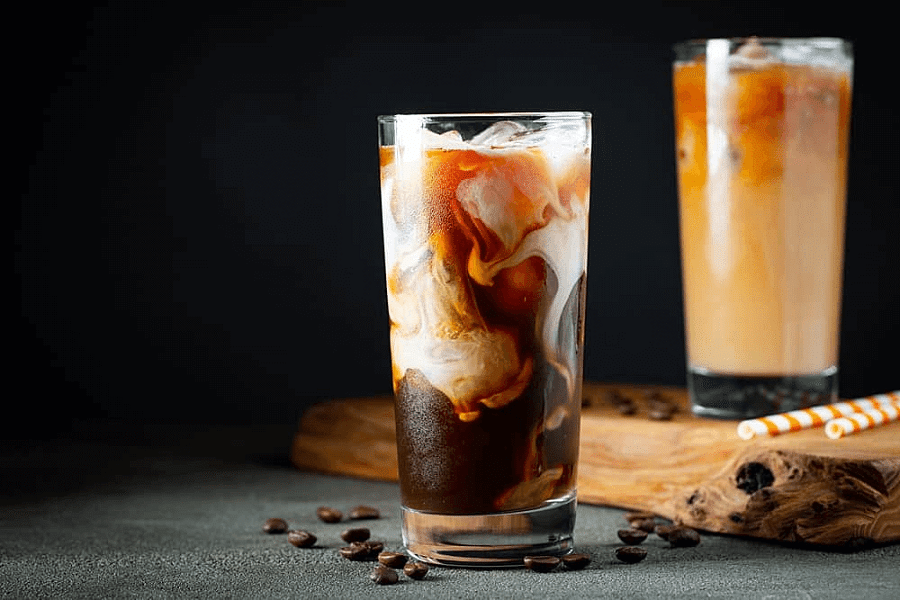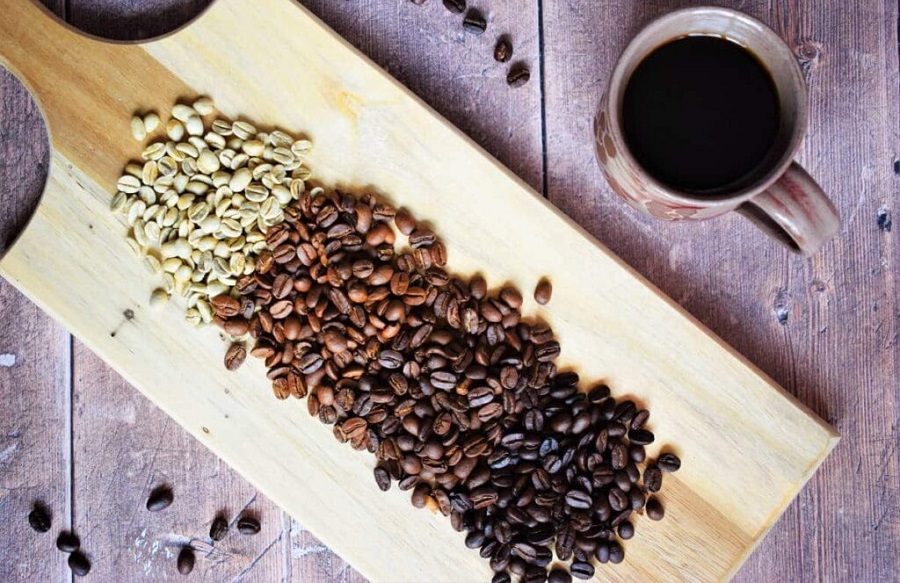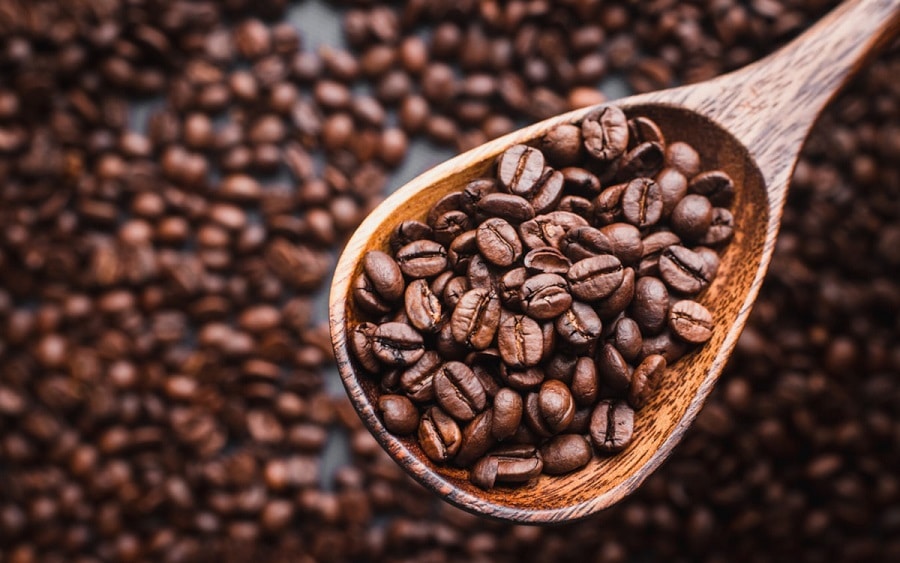Unlock the unique characteristics of Thai and Vietnamese coffee. Discover the differences between the two beverages and determine which type of coffee is best suited for a particular recipe to ensure that you get the optimal flavor in each drink.
Vietnamese and Thai coffee are excellent drinks to savor during a warm summer. They are popular Southeast Asian coffee varieties; with different tastes, brewing processes, and cultural importance.
Thai coffee is sweet and robust, brewed with either condensed milk or evaporated milk and sugar, while Vietnamese coffee is strong and dark, mostly prepared with condensed milk. Although they share similarities, notable differences make each their own unique beverage.
Below is a comparison guide to understanding Thai and Vietnamese coffee differences.
Thai Coffee vs Vietnamese Coffee: The Main Difference
Thai coffee and Vietnamese coffee are both well-known concoctions in the Southeast Asian region and beyond and while they have numerous similarities, there are a few significant distinctions to familiarize yourself with. Below are some of the foremost differences between Thai and Vietnamese coffee:
| Thai Coffee | Vietnamese Coffee | |
| Coffee Beans | Robusta | Robusta and/or Arabica |
| Roasting | Light to medium | Dark |
| Sweetness | Sweetened with condensed milk | Sweetened with condensed milk or sugar |
| Flavor | Mild and nutty | Bold and chocolatey |
| Preparation | Brewed using a cloth filter | Brewed using a metal drip filter |
| Serving | Often served over ice | Typically served hot |
The differences between Thai and Vietnamese coffee can be attributed to the type of beans used and the roasting process. Thai coffee usually consists of Robusta beans that are light to medium roasted, creating a nutty flavor profile. Vietnamese coffee, on the other hand, may use a combination of Robusta and Arabica beans, which are roasted until they're dark and give the coffee a bold and chocolatey taste.
The taste of Thai and Vietnamese coffee is also quite different from one another due to the way they are sweetened. While Thai coffee is most commonly sweetened with condensed milk, you can use either condensed milk or sugar for your Vietnamese coffee.
Furthermore, the preparation of these beverages also varies slightly. In Thailand, coffee is usually brewed by passing it through a cloth filter. On the other hand, Vietnamese coffee is made with a metal drip filter (phin) that sits on top of the cup.
Furthermore, there are differences in the way the coffee is served. Whereas Thai coffee is typically served cold over ice to remain cool on hot days, Vietnamese coffee is generally consumed hot instead.
History and Origin

Coffee has a long history across Southeast Asia, Thailand, and Vietnam, with each country having its story of how this popular beverage became a part of its distinct culture.
Thailand's coffee history dates back to the early twentieth century when Arabica coffee beans from Ethiopia were first introduced. But, it was in the 1970s that coffee became popular among residents. There are four main types of Thai coffee beverages; Thai iced coffee, Oiliang, Yok Lor Oiliang, and Kopi. Thai coffee is currently well-known for its sweet and robust flavor, which is made with condensed milk and is a mainstay at many eateries and coffee houses.
On the other hand, Vietnamese coffee has a long history in Vietnam, referring to the French colonial period in the nineteenth century. Coffee was brought to Vietnam by the French, and coffee lovers rapidly began consuming it; it is now the world's second-largest coffee producer. People recognize Vietnamese coffee's robust and dark flavor as it is brewed with condensed milk and dark roasted beans.
Coffee Beans

Coffee beans are the backbone of every great cup of coffee. Each country has its distinct kind of beans that add to the taste and flavor of its coffee. In Thailand, Arabica is the major coffee bean used, cultivated in the country's northern mountainous regions. These beans are popular for Thai coffee since they are medium-bodied with a smooth and fruity flavor. Thai coffee is recognized for its sweet and powerful taste, complemented by condensed milk's creaminess.
Vietnamese coffee, on the other hand, is primarily made from Robusta beans cultivated in the country's central highlands. Robusta beans have a stronger, more bitter flavor and contain more caffeine than Arabica beans.
As a result, they are a favorite option for Vietnamese coffee, which is recognized for its strong, black flavor. In Vietnamese coffee, the strong taste of Robusta beans is complemented by the sweetness of condensed milk, giving a distinct and pleasing flavor.
Brewing Method

The brewing method is essential to the coffee's flavor and overall quality. Thai and Vietnamese brewing procedures are different from one another. Thai coffee is traditionally prepared with a cloth filter, commonly called a ” muslin bag” with a metal ring and a handle.
The filter is packed with coffee grinds, and hot water is poured over it, allowing the coffee to drop slowly into a pitcher. The cotton filter ensures the coffee is extracted smoothly and consistently, producing a rich and sweet-smelling brew.
Vietnamese coffee, on the other hand, is brewed with a little metal filter known as a “phin.” The phin is placed in a mug, and boiling water is poured over it, allowing the coffee to drop slowly. The brewed coffee is then placed in an ice-filled glass. The phin filter is preferred for Vietnamese coffee Since it allows for a slow extraction procedure, enhancing the coffee's robust and rich flavor.
Sweeteners and Condiments

One of the main ingredients used to enhance the taste of Thai coffee is sweetened condensed milk. This ingredient provides a unique creamy and sweet flavor to the coffee that sets it apart from other types of coffee. Thai coffee is often enhanced with sugar and flavors like cardamom or cinnamon, making it a unique flavor.
In the case of Vietnamese coffee, sweetened condensed milk is also a common ingredient used to add a creamy sweetness to the coffee. However, the Vietnamese add egg yolks or chocolate to the coffee, creating a richer and more indulgent flavor. These unique ingredients give Vietnamese coffee a distinct taste different from Thai coffee or other types of coffee.
Serving Style

The way coffee is served and consumed differs between Thailand and Vietnam. In Thailand, coffee is often served in small cups, allowing frequent daily consumption. Additionally, Thai coffee is commonly enjoyed iced, especially during the hotter summer months. This method of serving provides a refreshing and cooling experience, which is perfect for Thailand's climate.
On the other hand, Vietnamese coffee is typically served in small glasses and is commonly consumed in the morning or afternoon. Like Thai coffee, Vietnamese coffee is also commonly served with ice, making it a refreshing beverage during hot weather. This serving style perfectly balances the rich and strong coffee taste and the cooling sensation of the ice.
Which Contains More Caffeine?
Thai and Vietnamese coffee is known to contain caffeine, primarily due to the strong brewed coffee used in their preparation. However, Vietnamese coffee typically has a stronger taste and higher caffeine content than Thai coffee. This can be attributed to the use of dark-roasted Robusta coffee beans, which are commonly used in brewing Vietnamese coffee.
Furthermore, the traditional use of a Phin filter in brewing Vietnamese coffee contributes to its strong taste and high caffeine content. This filter requires a lot of coffee grounds compared to the amount of water used, resulting in a robust coffee with high caffeine content.
Which Coffee Is Healthier?

Vietnamese coffee is typically prepared with sweetened condensed milk, which adds to its calorie count. In contrast, Thai iced coffee can be made with either condensed milk or milk and sugar, with the latter having fewer calories than Vietnamese coffee.
Conclusion
Thai and Vietnamese coffee offer unique flavors, brewing methods, and cultural importance. While Thai coffee is known for its sweet and robust taste, Vietnamese coffee is recognized for its strong and dark flavor. The type of coffee bean, brewing method, and ingredients used differ, giving each its distinct flavor profile.
Both types of coffee are commonly consumed with condensed milk and are served with ice during hot weather. Ultimately, the choice between Thai and Vietnamese coffee comes from personal preference. So, the next time you're looking for a refreshing and delicious coffee, try both and see which one you prefer.